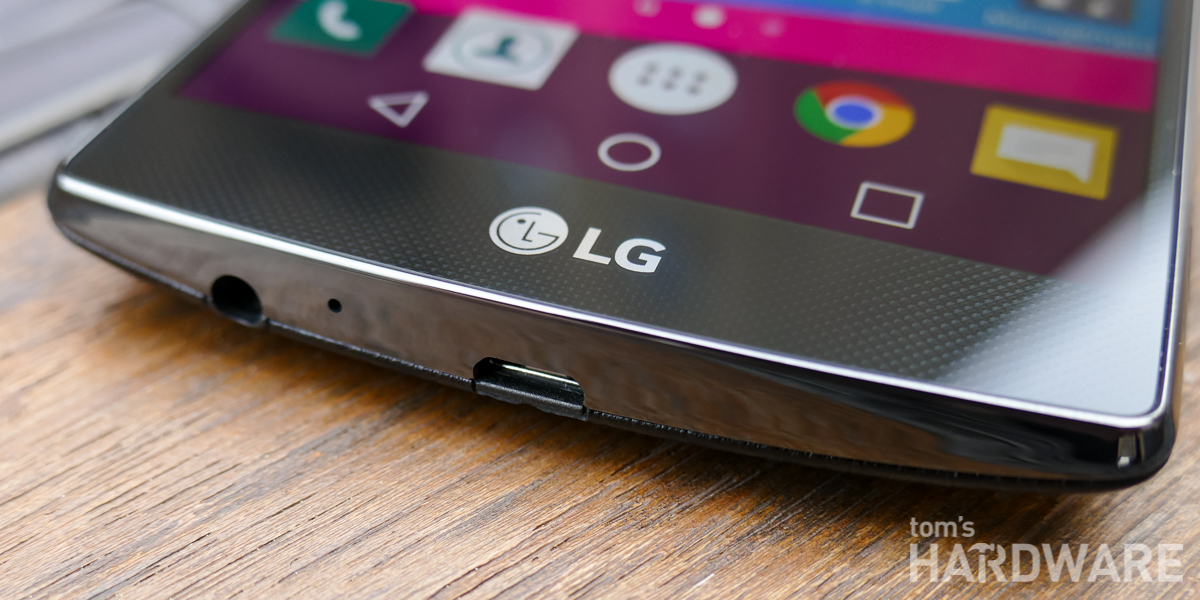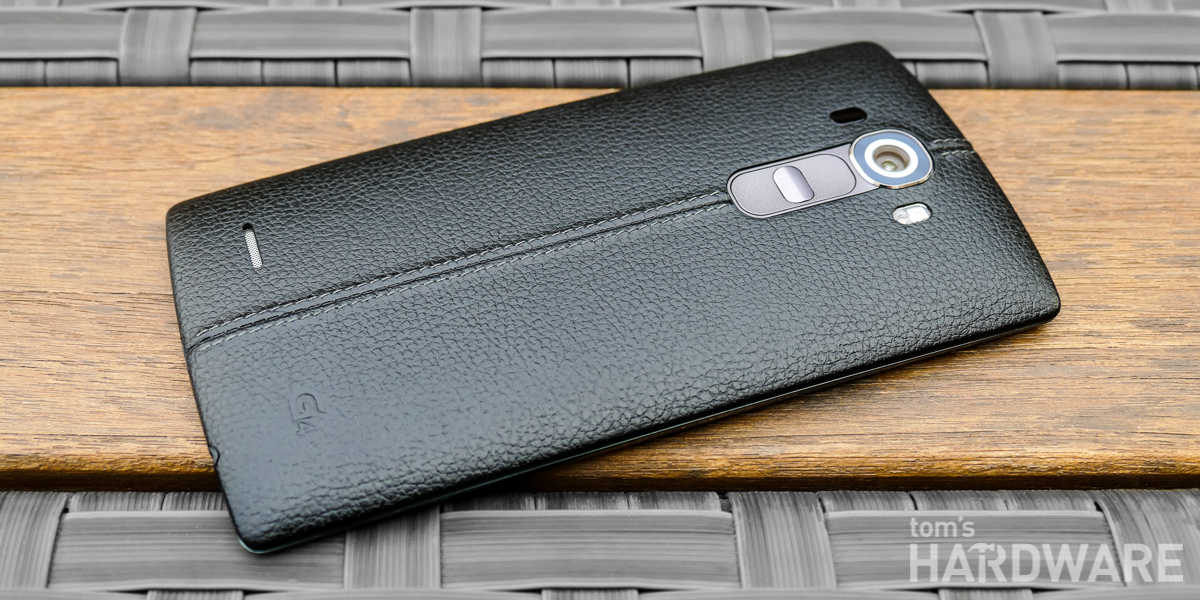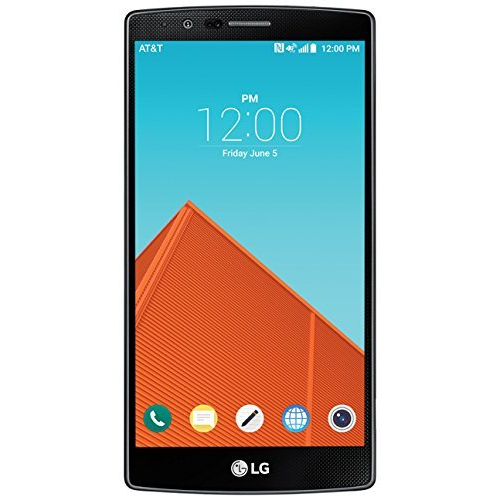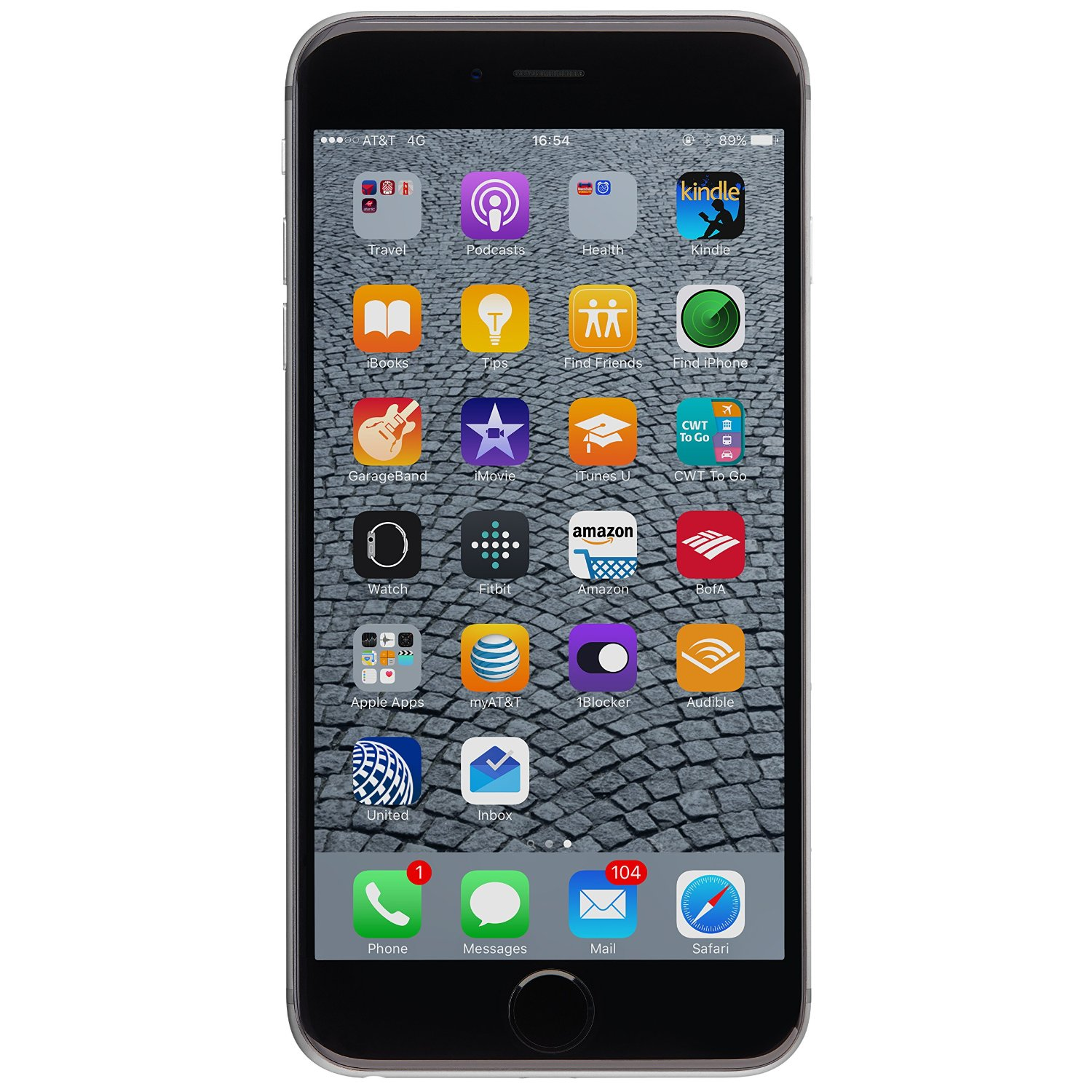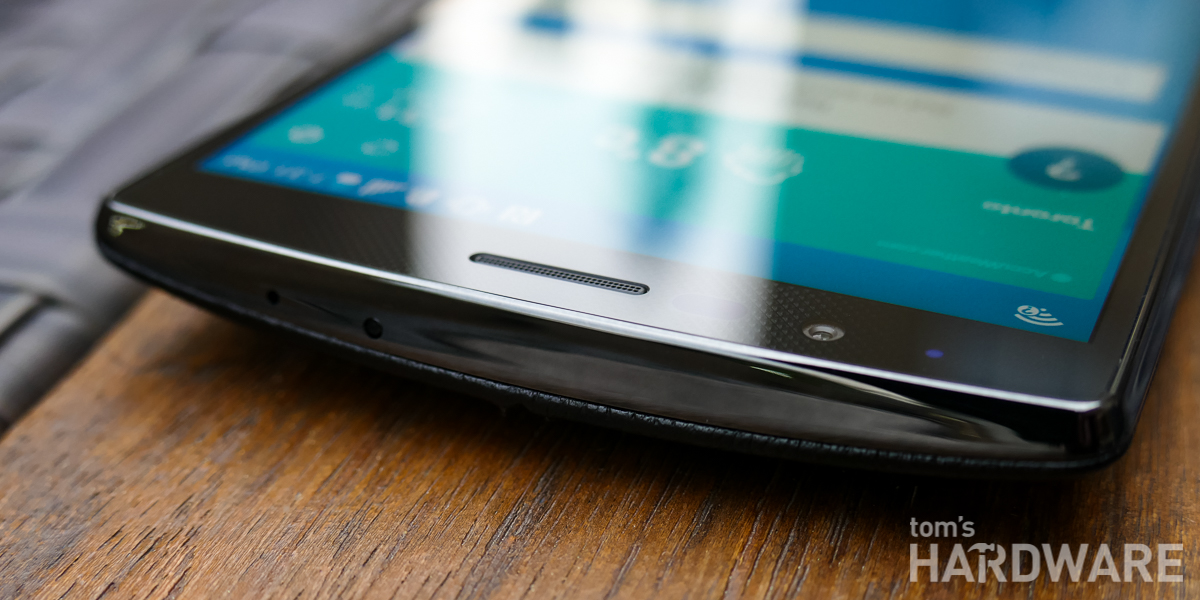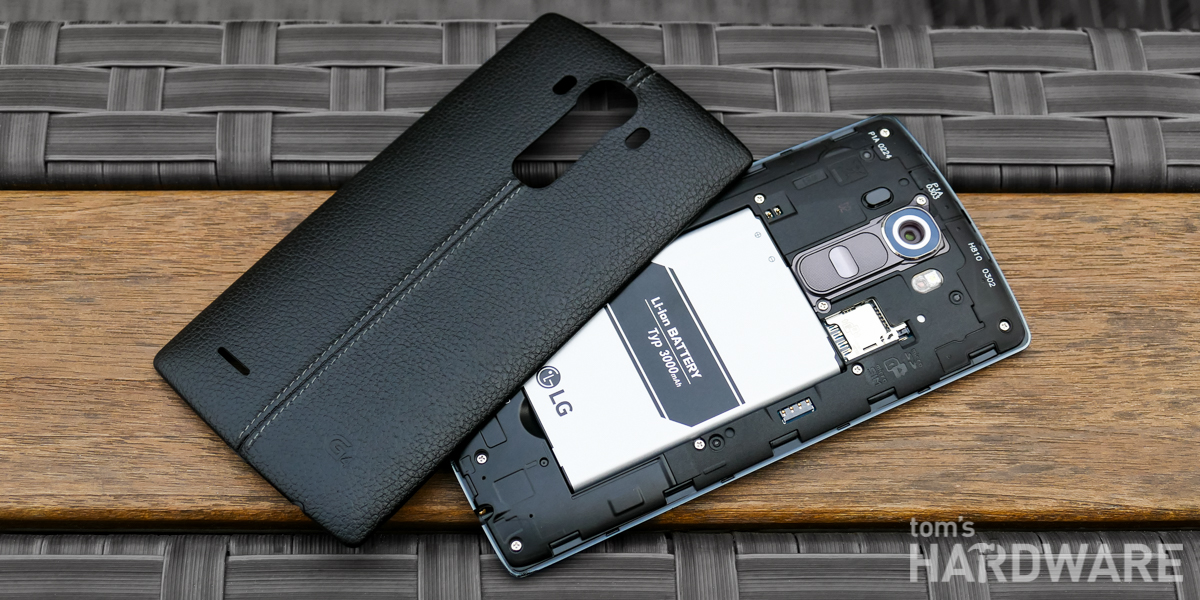LG G4 Review
The LG G4 retains a familiar look and still packs a removable battery and microSD slot, but it receives several internal upgrades, including a Snapdragon 808 SoC, an all-new camera, and a QHD IPS Quantum Display.
Why you can trust Tom's Hardware
Introduction & Specifications
If Apple are the Beatles and Samsung the Stones, then LG are the Monkees. The Monkees produced some hits and were a popular band, but critics dismissed them as prefab clones, which was true early in their history. However, they steadily improved, and the band’s later output comprised of some genuinely great records.
Similarly, LG’s initial Android smartphone offerings were serviceable but unoriginal variations of Samsung’s more popular devices. But just like the Monkees’ music, LG’s phones (starting with the G2) have steadily improved in both quality and design to the point where they stand on their own. The LG Nexus 5 was widely considered as one of the best mid-range phones available until its recent discontinuation. This apparently did not go unnoticed by Google, because it enlisted LG to create its successor, the Nexus 5X.
Following the success of the G2, the LG G3 also proved to be a good phone, held back from greatness only by being too forward reaching. Its high-resolution, QHD screen—now standard on most flagship phones, including the G4—was less power efficient than the 1080p panels that were standard at the time, reducing battery life, and its many pixels dragged down performance.
Its investment in engineering and design has helped improve LG’s smartphone brand cachet over the years, with 2014 its best year yet for phone sales.Thanks to the success of the G3, LG’s phone sales grew 24%, narrowing the gap between itself and the biggest Android OEM, Samsung.
However, Apple finally realized that many people wanted a phone that was larger than a pack of gum and released the iPhone 6 and 6 Plus in the fall of 2014, disrupting the market for large-screen phones that was owned almost exclusively by Android at the time. Apple’s presence, along with increased competition from Chinese OEMs, forced incumbents like LG and Samsung to up their game.
One of the changes we’re seeing is a move away from plastic towards more “premium” materials, primarily metal. Samsung started using aluminum with the Galaxy Alpha and eventually redesigned its entire smartphone lineup using aluminum and glass starting with the Galaxy S6 and S6 edge. The new materials and flashy design meant jettisoning popular features such as a removable battery and expandable storage.
LG has largely resisted this trend, however. The G Flex 2 is still an all-plastic design, by necessity, but features improved styling. For the G4, LG decided not to monkey around with the G3’s compilation of features and materials. It keeps the microSD slot, removable battery, and plastic exterior. The G4 does not ignore the material trend completely, though, offering a “premium hand-stitched” leather rear cover as a bonus track.
Get Tom's Hardware's best news and in-depth reviews, straight to your inbox.
The G4’s design remains largely the same as the G3, with a similar overall appearance and the use of LG’s signature rear-mounted buttons. It’s still quite compact for a device packing a QHD 5.5-inch display—which is now gently curved, although its radius is nowhere near as pronounced as the G Flex 2’s.
Along with its choice of materials, there was a lot of speculation about which SoC LG would use in the G4. Historically, LG has used Qualcomm’s flagship SoC in its flagship device, and for 2015 that would be the 64-bit Snapdragon 810. However, after pre-release rumors about its overheating issues proved true, an issue that plagues several 810-powered devices such as the HTC One M9 and LG’s own G Flex 2, among others, there was some concern the G4 would suffer a similar fate.
Fortunately, LG wisely decided to use the hexa-core Snapdragon 808, the next model down from the problem-plagued Snapdragon 810. Will the loss of two powerful A57 cores keep heat in check without handicapping its performance?
Specifications
While it still has a QHD 5.5-inch IPS display like the G3, the G4’s panel is completely new, something LG dubs “IPS Quantum Display.” Does the screen exist in a superposition of both the on and off states when sealed inside a box? Maybe if the screen actually used quantum dot technology, but it does not. LG does boast that its new screen is 25% brighter with 20% better color reproduction and 50% higher contrast, claims we put to the test later in this review.
The G4 comes with 3GB of RAM, which seems to be standard for a 2015 flagship phone. Unfortunately, the Snapdragon 808 still only supports LPDDR3, so the G4 misses out on the power savings and additional memory bandwidth that LPDDR4 offers. As for onboard storage, the only option is 32GB. Although it’s good to see that LG does not even consider 16GB a viable option for a flagship device, a 64GB option would have still been welcome. Fortunately, LG continues to believe in the usefulness of a microSD slot, which provides the option for additional storage space.
One of the G4’s unique features is a 3,000 mAh removable battery, a rarity for a current generation smartphone. As can be seen from the chart above, LG is the only big Android OEM still offering this feature. LG also supports Qualcomm’s Quick Charge 2.0 technology on the G4, but just like the G3, the charger in the box does not. If you want fast charging, you’ll have to source an aftermarket one. Wireless charging also is not included out of the box, but LG does offer optional cases that add it.
We’ll discuss the cameras in depth later, but it’s clear that LG has markedly improved the specs of the G4’s cameras over the already respectable ones in the G3. Its 16 MP Sony IMX234 sensor, very wide f/1.8 aperture lens, laser autofocus, improved OIS, and a fully featured manual mode give the G4, at least on paper, one of the best cameras of any smartphone. To see if this is true, we’ll be comparing pictures taken by the G4 to several other leading smartphones under several different lighting conditions.
Most reviews knocked HTC for making its 2015 One M9 flagship an iterative upgrade and conversely praised Samsung for almost starting from scratch with its Galaxy phones this year (user opinion was a bit more mixed). Was staying the course and producing more of the same the right choice for the G4?
Cellular
| Model Number | LG-H810 | LG-H811 | LG-H812 | LG-LS991 | LG-US991 | LG-VS986 |
|---|---|---|---|---|---|---|
| Carriers | AT&T | T-Mobile | Bell, MTS, Rogers, Sasktel, Telus, Videotron, Wind Mobile | Sprint | U.S. Cellular | Verizon |
| Baseband | Qualcomm X10 LTE | |||||
| RF Transceiver | Qualcomm WTR3925 | |||||
| RF ICs | Avago ACPM-7717 power amplifier | |||||
| LTE | 1 / 2 / 3 / 4 / 5 / 7 / 17 | 2 / 3 / 4 / 5 / 7 / 12 | 2 / 4 / 5 / 7 / 12 / 13 / 17 / 29 | 25 / 26 / 41 | 2 / 4 / 5 / 12 / 13 / 17 / 25 | 2 / 3 / 4 / 5 / 7 / 13 |
| GSM | 850/900/1800/1900 MHz | 850/900/1800/1900 MHz | 850/900/1800/1900 MHz | 850/900/1800/1900 MHz | 850/900/1800/1900 MHz | 850/900/1800/1900 MHz |
| CDMA2000 | ✗ | ✗ | ✗ | 0/1/10 | 0/1 | 0/1 |
| WCDMA | 1/2/5 | 1/2/4/5 | 1/2/4/5 | 1/2/5 | 1/2/5/8 | 1/2/5/8 ? |
Like most flagship phones, the LG G4 comes in several different carrier and region specific variants. While each caters to specific sets of frequency bands, they all use the same underlying hardware. The hub of the G4’s RF solution is the Qualcomm X10 LTE baseband processor integrated into the Snapdragon 808 SoC. It supports Category 9 LTE speeds of up to 450 Mbps on the downlink (3x20 MHz carrier aggregation with 64-QAM) and up to 50 Mbps on the uplink (1x20 MHz with 16-QAM) and supports all major radio modes, including GSM/EDGE, UMTS (WCDMA, TD-SCDMA), LTE (LTE-FDD, LTE-TDD) and CDMA2000.
The X10 baseband is paired with Qualcomm’s WTR3925 RF transceiver, which is the first single-chip solution from Qualcomm to support all of the 3GPP approved carrier aggregation band combinations. Unlike most other flagships, the G4 does not include any of Qualcomm’s RF360 components, including the QFE1100 envelope tracker. This is likely a cost-cutting move, but it will also negatively impact the G4’s battery life.
-
cknobman Wife absolutely loves this phone and glad she picked this over the Samsung S6.Reply
While it does not have quite the specs the Galaxy S6 does the microSD slot and the removable battery make it the easy choice.
LG gave her a free premium leather cover and a extra battery with charging cradle.
Sealed batteries are terrible because when they go bad you either ditch the phone or pay big money to have it replaced.
I learned the hard way with my last phone that had a sealed battery, it will never happen again. -
geosol62 DONT YOU THINK THIS REVIEW IS A DAY LATE???? WTF!!!Reply
GET WITH THE Z170 ROUND UP ALREADY! -
jimmysmitty Reply16981641 said:Wife absolutely loves this phone and glad she picked this over the Samsung S6.
While it does not have quite the specs the Galaxy S6 does the microSD slot and the removable battery make it the easy choice.
LG gave her a free premium leather cover and a extra battery with charging cradle.
Sealed batteries are terrible because when they go bad you either ditch the phone or pay big money to have it replaced.
I learned the hard way with my last phone that had a sealed battery, it will never happen again.
I agree that a SD card slot would be nice but the battery is something I am not as convinced because most people move on from a smart phone in two years (now sooner with the new way they do their plans) and I have had a lot of phones and never had a battery die in that two year period. Only one of them started having issues with longevity of use and that was the Droid Bionic I had that was known for having horrible battery life.
The microSD is very nice though for music and pictures, especially if you use FLAC quality audio or take a ton of pictures.
I hops Samsung at least puts that back into the S7 but then again the Lumia 950XL looks very tempting especially with the USB Type-C and docking station. -
Rob_9_ The G5 could well be launched in 7-8 weeks. Tom must've been writing this this review for a good while ;-) I have a G4 - it's fast, reliable, skinny, has a beautiful display and you can swap the battery out when it gets low.Reply
LG work closely with Google and Quallcomm to get fast(ish) updates and searing performance.
The headphone jack is on the bottom so it doesn't dangle weirdly and obtrusively from the top of your device like most other handsets. Plus, you can edit the nav keys any way you want which is a welcome relief from the awkward placement of the stock buttons.
I've owned loads of phones. Ignore these benchmark and gamut 'ratings'. This phone really is awesome. And it's now very cheap. -
cknobman ReplyI hops Samsung at least puts that back into the S7 but then again the Lumia 950XL looks very tempting especially with the USB Type-C and docking station.
I have a Lumia 950xl on pre-order, ships Nov 25th.
Looking forward to it. -
SamSerious Apart from this review being more than late, i stopped reading after the first ten sentences. It is nonsense that early LG phones lacked quality and were copies of what Samsung offered at the same time. The firmware often spoiled the otherwise good phone, ok, but e.g. the build quality was always very high, these things were built like bricks. Even my Optimus P880 ist way more solid than any Samsung Andorid phone i know.Reply -
innocent bystander Got a G3 and nothing I see here makes me want to upgrade.Reply
Then again, I'm the type of smartphone user for whom a full charge will last 3 days... -
ptrick2000 It was impossible for me to delve into the review itself after reading the first paragraph. The Monkees later output produced generally great records? This analogy is an insult to LG.Reply -
SirGCal The V10 is out for everyone accept Sprint and the G4 Pro (GIMME GIMME GIMME) is rumored to be right around the corner. So this does seem a bit late.Reply

